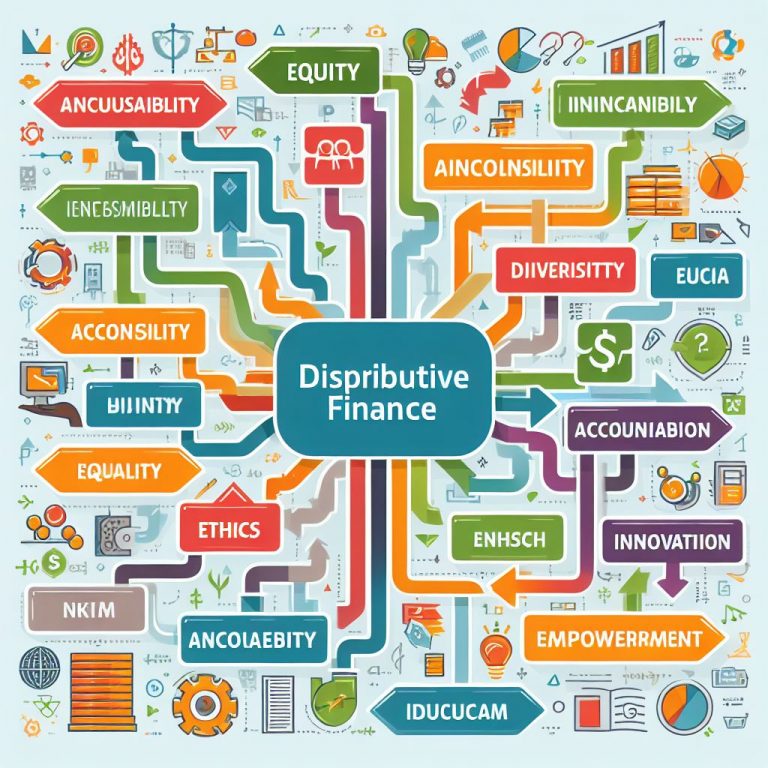- 1. Introduction
- 2. Historical Development and Theoretical Background
- 3. Key Principles of Reproductive Finance
- 4. Role in Economic Systems
- 5. Case Studies and Real-world Applications
- 6. Challenges and Criticisms
- 7. Conclusion

1. Introduction to the Reproductive Concept of Finance
In the diverse world of financial theory, the reproductive concept of finance stands out as a critical approach focused on fostering long-term economic development. This concept centers on the idea that financial resources should be allocated in a way that promotes sustainable growth, primarily through investments in human capital, infrastructure, and technology. By understanding its origins, principles, and applications, we gain insight into how this concept shapes Multi-payment systems economic policies and influences the broader financial landscape.
2. Historical Development and Theoretical Background
2.1 Origins and Evolution
The reproductive concept of finance is rooted in economic theories that emphasize the importance of investment in human capital and infrastructure for long-term economic growth. This concept has evolved over several centuries, influenced by various economic thinkers and real-world economic developments.
Classical Economics: The foundations of the reproductive concept can be traced back to classical economists like Adam Smith and David Ricardo. They recognized the importance of productive labor and capital accumulation in driving economic growth. Smith, in particular, highlighted the significance of human capital, noting that improved labor productivity through education and training could boost economic prosperity.
Keynesian Economics: In the 20th century, John Maynard Keynes brought a new perspective by emphasizing government intervention in the economy. Keynesian economics suggested that during economic downturns, government spending in public projects could stimulate demand, create jobs, and lead to an overall increase in national income, thereby supporting the reproductive aspects of finance.
Human Capital Theory: The mid-20th century saw the development of human capital theory, primarily by economists like Theodore Schultz and Gary Becker. This theory posits that investments in education, health, and training are critical for improving productivity and economic growth. It expanded the concept of capital beyond physical assets to include the skills and abilities of the workforce.
Modern Perspectives: In recent decades, the reproductive concept of finance has been influenced by globalization, technological advancements, and the growing recognition of sustainable development. Modern interpretations of this concept often focus on how financial policies can support innovation, technological development, and sustainable practices that ensure long-term economic health and societal well-being.
3. Key Principles of Reproductive Finance

3.1 Investment in Human Capital
One of the cornerstone principles of reproductive finance is the investment in human capital. This concept acknowledges that the skills, knowledge, and experience of individuals in a workforce are critical assets that can drive economic growth and productivity. Key areas of focus include:
Education and Training: Investing in education systems to ensure a skilled and knowledgeable workforce, adaptable to the changing economic landscape.
Healthcare: Promoting health as a fundamental component of human capital, where a healthy workforce is seen as more productive and efficient.
Workforce Development: Initiatives that focus on skill development, retraining, and lifelong learning to keep the workforce relevant in a dynamic economic environment.
3.2 Long-term Economic Growth
Reproductive finance emphasizes the importance of strategies and policies that foster sustainable and inclusive long-term economic growth. This involves:
Sustainable Investment: Channeling financial resources into projects and sectors that promise long-term economic benefits, such as renewable energy, technology, and infrastructure development.
Inclusive Growth Policies: Ensuring that economic growth benefits all sections of society, reducing inequality, and providing opportunities for upward economic mobility.
Balancing Short-term and Long-term Objectives: Navigating the challenges of addressing immediate economic needs while laying the groundwork for future prosperity.
4. Role in Economic Systems
4.1 Public and Private Sector Contributions
The reproductive concept of finance involves both the public and private sectors, each playing a vital role in fostering economic growth and development.
Public Sector Role: Governments primarily contribute through fiscal policies, including public spending on education, healthcare, and infrastructure. These investments not only create jobs but also lay the foundation for future economic growth. Additionally, government policies can incentivize private sector investment in key areas, aligning with long-term economic objectives.
Private Sector Role: Businesses and private investors are crucial in driving innovation, technological advancement, and job creation. Private sector investments in research and development, human capital, and new ventures are essential for dynamic and sustainable economic growth. Public-private partnerships can also be effective in combining the strengths of both sectors to achieve common developmental goals.
4.2 Impact on Labor Markets
Reproductive finance significantly influences labor markets, shaping employment trends and workforce dynamics.
Skill Development and Employment Opportunities: Investments in education and training lead to a more skilled workforce, better equipped for the demands of a modern economy. This not only enhances employability but also attracts higher-paying industries to invest in regions with skilled labor.
Adaptability to Technological Changes: With rapid technological advancements, the need for continual skill upgradation becomes crucial. Reproductive finance supports the development of a flexible labor force capable of adapting to new technologies and economic shifts.
Creating Inclusive Labor Markets: Strategies that focus on inclusive growth ensure that the benefits of economic progress extend to all sections of society, reducing inequality and preventing labor market segmentation.
5. Case Studies and Real-world Applications
5.1 National Policies and Programs
Examining national policies and programs offers valuable insights into the practical application of the reproductive concept of finance. Different countries have adopted unique approaches, reflecting their specific economic contexts and social priorities. Here are a few notable examples:
Germany’s Dual Education System: This program combines apprenticeships in a company and vocational education at a vocational school in one course. This system is highly effective in building a skilled workforce, reducing youth unemployment, and meeting the demands of the modern economy.
Singapore’s SkillsFuture Initiative: Launched to promote lifelong learning and skills mastery among Singaporeans, SkillsFuture provides resources and opportunities for citizens to develop skills relevant to future economic needs. It exemplifies a national commitment to human capital development.
Scandinavian Social Welfare Models: Countries like Sweden, Norway, and Denmark are known for their extensive social welfare systems, which include comprehensive healthcare, education, and social security programs. Funded through progressive taxation, these models aim to reduce inequality and promote social mobility.
U.S. Affordable Care Act (ACA): While primarily a healthcare reform, the ACA has implications for reproductive finance through its impact on the health and productivity of the American workforce, demonstrating the interconnection between health policy and economic vitality.
South Korea’s Investment in R&D and Education: South Korea’s remarkable economic growth has been partly attributed to significant investment in research and development and a strong focus on education. This strategy has transformed the country into a technology-driven, highly educated economy.
6. Challenges and Criticisms
6.1 Balancing Short-Term Needs with Long-Term Goals
One of the primary challenges in implementing the reproductive concept of finance is the balance between addressing immediate economic needs and investing in long-term developmental goals. This challenge is multifaceted and presents several key issues:
Political and Economic Pressures: Political leaders often face pressure to deliver immediate results, such as job creation or economic growth, which can lead to prioritizing short-term gains over long-term investments. Economic downturns or crises can exacerbate this tendency, as immediate relief often takes precedence over long-term planning.
Resource Allocation: Effective distribution of limited resources between immediate needs and long-term investments is a complex task. It requires not only a clear understanding of current economic conditions but also foresight into future trends and challenges.
Public Perception and Support: Gaining public support for policies that prioritize long-term benefits, which may not yield immediate visible results, can be challenging. This is particularly true in democracies where public opinion and electoral cycles can influence policy decisions.
Measuring Long-Term Impact: Assessing the long-term impact of policies and investments is often complicated and may not be apparent for years or even decades. This makes it challenging to justify certain investments, especially in the face of immediate economic issues.
7. Conclusion
The exploration of the reproductive concept of finance illuminates its fundamental role in shaping robust, sustainable economies. Through our journey from theoretical principles to real-world applications, we’ve seen how strategic investments in human capital, infrastructure, and technology underpin long-term economic growth and societal well-being.
The case studies from various countries, ranging from the vocational training systems in Germany to the comprehensive welfare models in Scandinavia, demonstrate the diverse ways in which nations can apply these principles to achieve different economic objectives. These examples underscore the importance of aligning financial policies with broader goals of social equity, economic resilience, and inclusive growth.
However, implementing the reproductive concept of finance is not without challenges. Balancing immediate economic pressures with long-term developmental goals requires thoughtful policy-making, continuous adaptation to changing global dynamics, and a commitment to equitable resource distribution.
As we look to the future, the principles of reproductive finance will continue to evolve, especially in response to technological advancements and global economic shifts. The ongoing challenge for governments and policymakers will be to harness these principles effectively, ensuring that economic growth is not only sustained but also shared equitably across all strata of society.
In summary, the reproductive concept of finance offers a blueprint for building economies that are not just prosperous but also equitable and resilient. Its continued relevance and application will be key to addressing the complex economic challenges of the 21st century and beyond.















+ There are no comments
Add yours